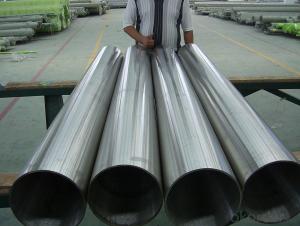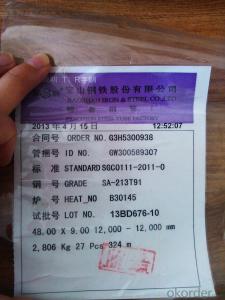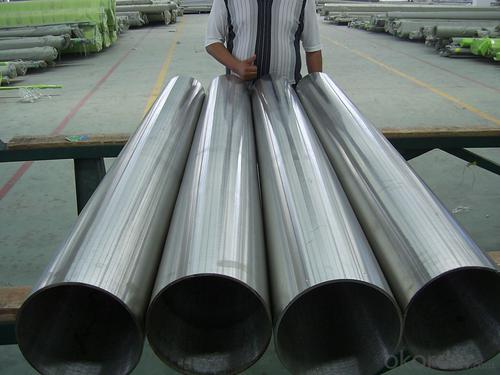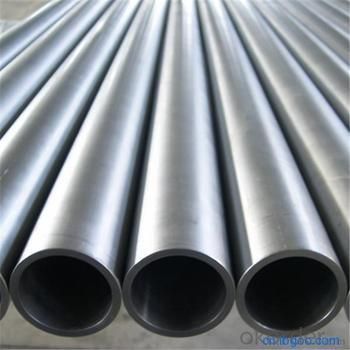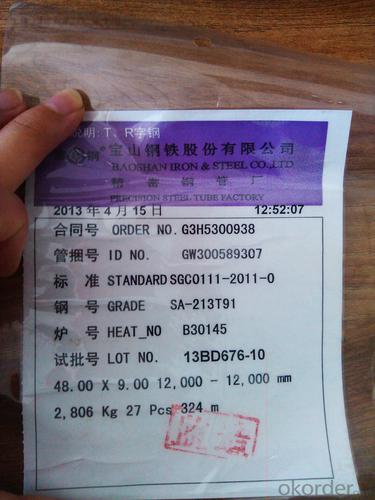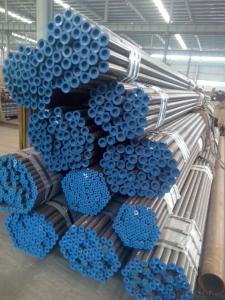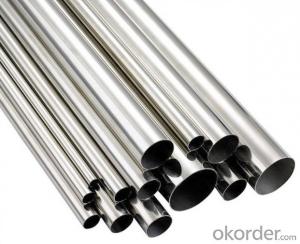ASTM A213 T91 boiler tube 25
- Loading Port:
- Shanghai
- Payment Terms:
- TT OR LC
- Min Order Qty:
- -
- Supply Capability:
- 30000 kg/month
OKorder Service Pledge
OKorder Financial Service
You Might Also Like
Alloy pipe stock grade A335P11/P22/P12/P91/P92/P9/P5 A213 T11/T22/T12/T91/T91/T9/T5
T91 alloy pipe is America national tree like ridge and America combustion new martensitic heat-resistant steel engineering company metallurgical materials laboratory research work. It is to reduce the carbon content of 9Cr1MoV steel on the basis of the content of sulphur, phosphorus, strictly limit the vanadium, niobium, adding small amount of alloying elements.
The number of K90901 T91 alloy tube
T91 alloy tube
T91 alloy pipe specifications: 8-1240 x 1-200mm
Overview of T91 alloy tube:
T91 alloy tubes for ferrite and Olympic alloy steel seamless steel tube boiler, overheating and heat exchanger belongs to (ASTM A213 / A213M-07a)
Use:
For low and medium pressure boiler (work pressure is generally not more than 5.88Mpa, the operating temperature at 450 DEG C) of the heating surface tube; used for high pressure boiler (work pressure is generally above 9.8Mpa, operate at a temperature of 450 DEG to 650 DEG C between) the heating surface tubes, economizer, superheater, reheater, petrochemical industrial pipe.
Heat treatment of T91 alloy tube:
The final heat of T91 treatment for normalizing and high temperature tempering, normalizing temperature 1040 C, the holding time of not less than 10 min, the tempering temperature is 730 to 780 DEG C, the heat preservation time is not less than 1h, the final heat treatment on Microstructure of tempered martensite
- Q: Can steel pipes be used for conveying steam?
- Yes, steel pipes can be used for conveying steam. Steel pipes are commonly used in steam distribution systems due to their high strength and durability. They can withstand high temperatures and pressures associated with steam transport without deforming or leaking. Additionally, steel pipes have excellent heat resistance properties, making them suitable for conveying steam at elevated temperatures. However, it is important to ensure that the steel pipes are properly insulated to prevent heat loss and maintain the desired steam temperature during transportation.
- Q: Why can't stainless steel be put together with carbon steel tube?
- The bimetallic corrosion is terminated only when one of the three conditions is changed. Galvanic corrosion is related to the contact area of bimetal and the greater the contact area. Corrosion is less. The driving force of galvanic corrosion is the potential difference.[galvanic corrosion] refers to two or more than two kinds of electrode potential of metal in the corrosive medium, and contact with each other caused by electrochemical corrosion, also known as contact corrosion or double metal corrosion.
- Q: How are steel pipes used in the manufacturing of pressure vessels?
- Steel pipes are commonly used in the manufacturing of pressure vessels as they provide the necessary strength and durability to withstand high internal pressure. These pipes are welded or seamless and are often used as the main structural component of the vessel. They allow for the efficient flow of fluids or gases within the vessel and provide a reliable and secure containment system for various industrial applications.
- Q: What is the size of seamless steel tube DN150?
- Seamless steel tube is generally used to indicate the outer diameter * wall thickness, DN150 seamless steel pipe GB wall thickness is 5mm. Wall thickness is a series of calculations based on your design, pressure, temperature, and pipe material.
- Q: How are steel pipes used in the mining and mineral processing industry?
- Steel pipes are used in the mining and mineral processing industry for various purposes such as transporting fluids, conveying materials, and providing structural support. They are commonly used in the construction of underground mine shafts, pipelines, and equipment for transporting and processing minerals. The durability and strength of steel pipes make them ideal for withstanding the harsh conditions and demanding requirements of the mining industry.
- Q: How are steel pipes tested for pressure and leakage?
- Steel pipes are tested for pressure and leakage using a variety of methods to ensure their safety and reliability. One common method is hydrostatic testing, where the pipe is filled with water and subjected to a specific pressure for a specified duration. This test helps identify any weaknesses or leaks in the pipe by observing if there is any pressure drop or visible water leakage. The pressure is carefully measured and monitored during the test, and if the pipe successfully withstands the required pressure without any signs of leakage, it is considered to have passed the test. In addition to hydrostatic testing, other non-destructive testing methods may also be employed. These methods include ultrasonic testing, which uses high-frequency sound waves to detect any flaws or defects in the pipe material, and magnetic particle testing, which involves applying a magnetic field to the pipe and inspecting it for any magnetic particles that may indicate cracks or imperfections. Moreover, visual inspection is an essential step in testing steel pipes for pressure and leakage. Trained inspectors examine the exterior and interior surfaces of the pipe to check for any visible signs of damage, such as corrosion, cracks, or faulty welds. This visual inspection helps to identify potential weak points that could lead to leaks or failures under pressure. Overall, a combination of hydrostatic testing, non-destructive testing methods, and visual inspection is used to comprehensively evaluate steel pipes for pressure and leakage. These rigorous testing procedures ensure that the pipes meet the required standards and are safe for their intended applications.
- Q: What are the different types of valves used with steel pipes?
- There are several types of valves used with steel pipes, including ball valves, gate valves, globe valves, check valves, and butterfly valves.
- Q: How are steel pipes marked for identification?
- Steel pipes are marked for identification through a process called pipe marking. This involves applying labels or markers on the surface of the pipes to provide relevant information about their specifications and characteristics. The markings typically include details such as the pipe's size, grade, material composition, manufacturer's logo or name, and any other relevant codes or standards. These markings are crucial for identification and help ensure that the correct pipes are used for specific applications, as well as for maintenance and repair purposes. Additionally, the markings also aid in quality control and traceability, enabling easy identification and tracking of pipes throughout their lifecycle. Overall, proper identification of steel pipes through clear and durable marking systems is essential for maintaining safety, efficiency, and compliance in various industries where these pipes are utilized.
- Q: 45 and 316 which steel tubes are of high hardness?
- 316 stainless steel by adding Mo element, the corrosion resistance, and high temperature strength has greatly improved, high temperature can reach 1200-1300 degrees, can be used in severe conditions. 316F stainless steel is easy to cut stainless steel with high sulfur content. Good corrosion resistance, easy processing, good smoothness, suitable for axial parts.
- Q: How are steel pipes used in the manufacturing of pharmaceutical equipment?
- Steel pipes are commonly used in the manufacturing of pharmaceutical equipment due to their durability, corrosion resistance, and ability to withstand high-pressure conditions. These pipes are utilized for various purposes such as transporting fluids, gases, and chemicals within the pharmaceutical production process. They provide a reliable and hygienic method for transferring raw materials, intermediates, and final products. Additionally, steel pipes are often used in the construction of cleanrooms and sterile environments, ensuring the safe and efficient operation of pharmaceutical equipment.
Send your message to us
ASTM A213 T91 boiler tube 25
- Loading Port:
- Shanghai
- Payment Terms:
- TT OR LC
- Min Order Qty:
- -
- Supply Capability:
- 30000 kg/month
OKorder Service Pledge
OKorder Financial Service
Similar products
Hot products
Hot Searches
Related keywords
